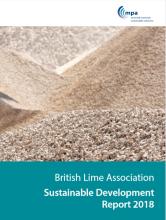A major British Lime Association (BLA) conference, Lime in Road Solutions, bought together more than 75 delegates from across the UK highways supply chain to discuss the innovative use of lime in highway resurfacing, for soil stabilisation and in road recycling.
Building from the Government’s Transport Strategy call for advanced materials aimed at “improving the quality, resilience and sustainability of transport infrastructure”, the conference focussed on the use of lime to extend asphalt road maintenance intervals, and on the use of soil stabilisation and hydraulically bound materials for road recycling.
Pre-empting the Government’s Industrial Strategy commitment to “progressively upgrade our road network”, the need for quality, funding consistency and long-term thinking were highlighted by Rob Gillespie, representing the Local Government Technical Adviser Group and James Elliott, chair of the Highways Term Maintenance Association Asset Management Group. Donald Burton from Highways England stressed the importance of technical innovation to help Highways England deliver the Road Investment Strategy.
Dr Helen Bailey and Chris Rowan from Derby University Centre for Mineral Products, and Professor Gordon Airey, from the Nottingham Transportation Engineering Centre at the University of Nottingham, presented evidence demonstrating the durability benefits of lime in asphalt, observing that hydrated lime increases resistance to moisture damager and reduces the ageing susceptibility.
The research evidence was complemented by international practical experience from Christophe Denayer from the European Lime Association and Darren Hazlett, recently retired from the Texas Department of Transportation.
Christophe Denayer commented that Dutch roads use 2% lime additions in 90% of roads, and French highways use 1.5% lime in all wearing courses, which has increased their maintenance interval from 12 years to 14 years and could reduce carbon impacts by 23%. Darren Hazlett noted that about 25% of asphalt mixtures on Texas main highways contain lime, and that lime is a required or specified addition in almost half the States across the USA and, experience suggests that, many contractors prefer to use lime because they know it is a reliable addition to prevent the bitumen stripping away from the aggregate in asphalt.
The afternoon session focussed on the use of lime for soil stabilisation, hydraulically bound materials and road recycling, with presentations on new Britpave guidance BP62 from Steve Dunn, from Britpave’s Soil Stabilisation Task Group, the use of hydraulically bound materials from Dr Cliff Nicholls of TRL, and a case study on in situ road recycling by Bob Noakes representing the Road Surface Treatment Association.
Commenting on the success of the conference, Richard Stansfield, chair of the British Lime Association and managing director of Singleton Birch, said: “For a significant number of the delegates this conference was perhaps a revelation. They heard convincing testimony about the extensive benefits of lime in asphalt and the significant cost savings on offer to UK highways maintenance, not to mention the carbon savings and reduced congestion, which are all high in the public conscience.”
Dr Pal Chana, MPA executive director, added: “It was great to see so many delegates attending this conference. The international experience and UK research on using lime in asphalt presented was nicely complemented by the real-world needs set out by the highways maintenance and build authorities.”










